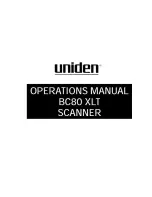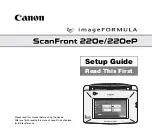
96
Chapter 13 Troubleshooting
Problem 1: Low reading efficiency.
Probable cause
What to do:
•
A target code is not within the scan range of the
reading window.
•
Bring a code within the scan range.
•
The code may be smeared.
•
Wipe off the dirt from the code.
•
The code may be blurred.
•
Use a code clearly printed.
Problem 2: Cannot read 2D codes or bar codes.
Probable cause
What to do:
•
The type of the code to be scanned has not been
set as a readable code.
•
Enable the type of the code to be scanned as a readable
code.
•
The scanned bar code contains no check digit,
while the "Enable, with a check digit" parameter is
selected.
•
Select the "Enable, without a check digit" parameter.
•
The check digit contained in the scanned bar code
is wrong.
•
Use a correct bar code.
Problem 3: Code data cannot be displayed normally on the computer screen. (USB-COM interface)
Probable cause
What to do:
•
The communications conditions of the scanner are
different from those of the connected host.
•
Change the communications conditions of the scanner
to match those of the connected host.
•
Any device driver other than our Active
USB-COM port driver may be used.
•
Use our Active USB-COM port driver that is designed
for the USB-COM interface.
Problem 4: Code data cannot be displayed normally on the computer screen.
(USB keyboard interface)
Probable cause
What to do:
•
The keyboard type selected may not match one
that is set up in the host computer.
•
Select the same keyboard type as one that is set up in
the host computer.
(You can check the computer's keyboard type by
clicking
My Computer
|
Control Panel
|
Keyboard
|
Hardware
.)
•
The Caps Lock state selected may not match that
of the connected keyboard.
•
Select the same Caps Lock state as that of the connected
keyboard.
•
Any device driver other than the system-supplied
driver (USB device class driver for HID) may be
used.
•
Use the system-supplied driver.
•
The computer's keyboard may be held down.
•
Do not press the computer's keyboard when scanning
codes.







































